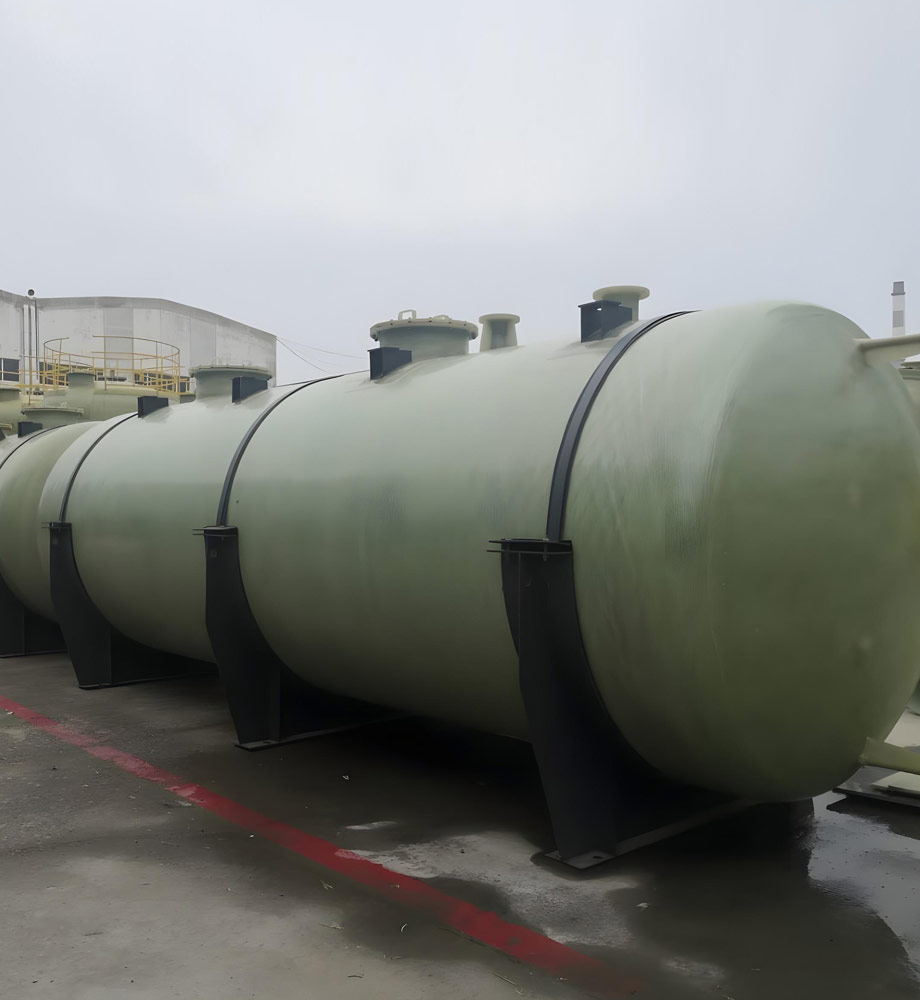Key Features
- Corrosion-Resistant FRP Shell: Vinyl ester or epoxy resin laminate, often with multiple layers of chopped/mat glass.
- Abrasion Resistance: Outboard reinforcement (e.g. C-glass) to resist slurry erosion.
- Large Capacity: Volumes from a few cubic meters to several thousand cubic meters (e.g. diameters 2–10m+).
- Accessories: FRP manways, agitators shafts (FRP or stainless), level fittings, mixers.
Benefits
- No Rust or Leaks: Unlike steel tanks, FRP will not pit or corrode from slurry exposure.
- Long Service Life: Tanks operate for decades without the costly recoating needed for steel.
- Tight Construction: FRP’s flexibility allows seamless, leak-tight construction even for large tanks.
Applications
Store raw water-slurry mix, recycled slurry, or gypsum slurry in power plant FGD systems. Also used as recirculation basins (slurry surge tanks) and neutralization tanks. Any FGD plant requiring heavy-duty slurry containment benefits from FRP’s abrasion and corrosion resistance.
Technical Specifications
- Standards: Often built to API 650 (FRP adaptation) or local tank codes.
- Wall Thickness: 3–6mm+ depending on size and corrosion allowance.
- Seismic/Wind Design: Per project location (FRP has high tensile strength and ductility).
Unique Selling Points
We engineer each FRP tank for project conditions. For extreme abrasion service, we can incorporate glass-flake linings or sacrificial coatings. Our field-wound tanks (up to 8m dia × 15m high, as per a recent project) demonstrate that FRP handles very large FGD slurry volumes. Combined with FRP piping and distribution headers, our slurry tanks form fully composite systems that minimize plant maintenance.

